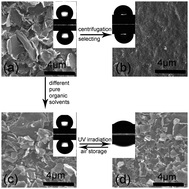Researchers at the State Key Laboratory of Solid Lubrication of the Lanzhou Institute of Chemical Physics have successfully fabricated graphene films with high hydrophobicity and adhesive force, as well as reversible wettability through two facile steps, namely, chemical exfoliation of natural flake graphite and film formation by suction filtration.
The roughening effect of the micro-/nanostructure on the graphene film surface greatly contributed to the hydrophobic performance and high adhesion to water. The wettability of the graphene film surface could be controlled by UV irradiation and air storage. These remarkable characteristics offer insight into the use of hierarchical nanostructures to regulate surface hydrophobicity and water adhesion of micropatterns, which are helpful in the design of artificial superhydrophobic materials, such as microfluidic devices, traffic indicators and textiles, and drag-reducing coatings.
Graphene, a structure of single-layer carbon atoms packed in a two-dimensional honeycomb lattice, has been extensively studied because of its excellent physicochemical properties. However, previous studies have mainly focused on the photoelectric performance of graphene, and not on its surface properties. The surface properties of graphene, which strongly depend on chemical composition and morphology, are highly significant in the manufacture of biomaterials, medical instruments, microfluidic devices, and so on.
Results of the present study can be a guide for the design of multifunctional devices.
The work has received support from the National natural Science Foundation of China and National Program on Key Basic Research Project of China (973 Program).
The findings have been published in J. Mater. Chem. (J. Mater. Chem., 2011, 21, 12251–12258).
J. Mater. Chem.Paper

